

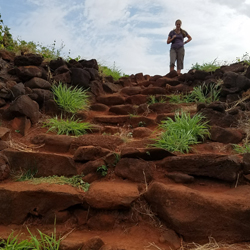
Hype:
This self-guided interpretive tour takes you past 17 points of interest in and around Russian Fort Elizabeth State Historical Park.Trail Condition: Class 1 (Trail is either paved or gravel. Navigation skills are not needed because there is only one trail or because there are signs. Elevation gains are gradual or there are stairs.)
Time: 20-30 minutes
Length: 0.5 miles round trip
Elevation Gain: Negligible
Fees: None
Recommended Ages:
 | 0-3 |
 | 4-11 |
 | 12-19 |
 | 20-49 |
 | 50-69 |
 | 70+ |
Recommended Months to Visit:
| Jan |
| Feb |
| Mar |
| Apr |
| May |
| Jun |
| Jul |
| Aug |
| Sep |
| Oct |
| Nov |
| Dec |
Links: www.fortelizabeth.org
Navigate to 21.952095, -159.663257.
Russian Fort Elizabeth is located right off highway 50 in Waimea, Kauai, Hawaii.
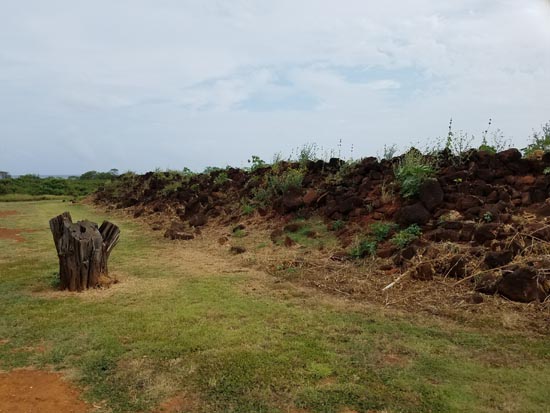
The fort wall consists of an earthen embankment with a stacked basalt boulder face and rubble fill. There was no mortar used in the construction of this wall. The wall averages 12 feet in height and the fort is 300 feet in diameter.
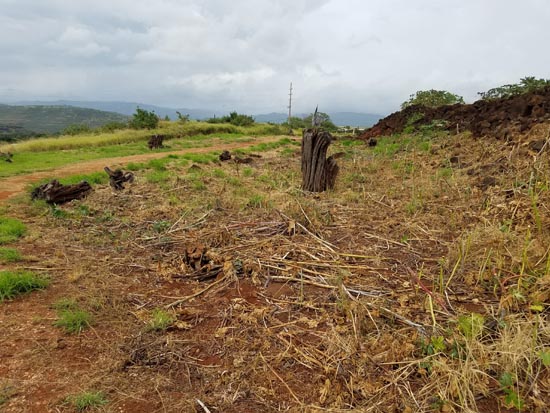
The trading house or factory was the first structure built at the fort. It was built to store the sandalwood used in the trade between the Russians and Hawaiians.
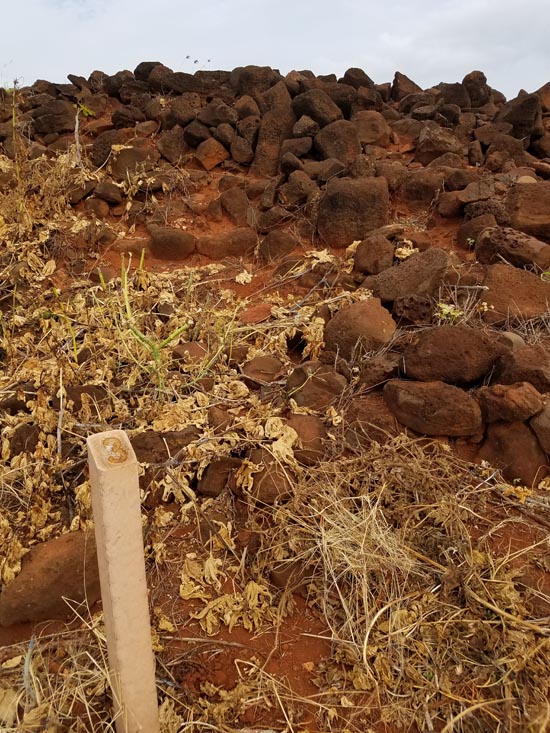
The entrance to the fort is narrow and separates the earlier Russian designed part of the fort on the seaward side from the later Hawaiian part on the side toward the mountains.
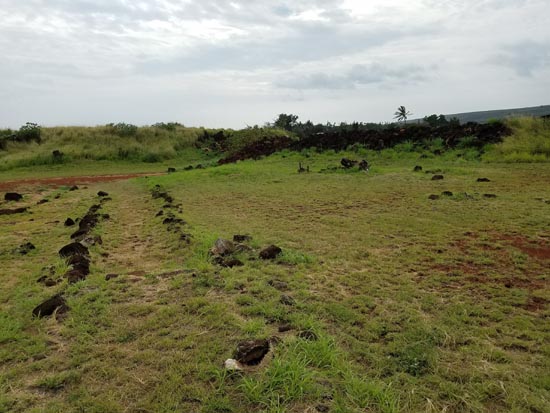
This rock alignment is thought to be a remnant of the foundation for the guardroom built at the fort entrance.
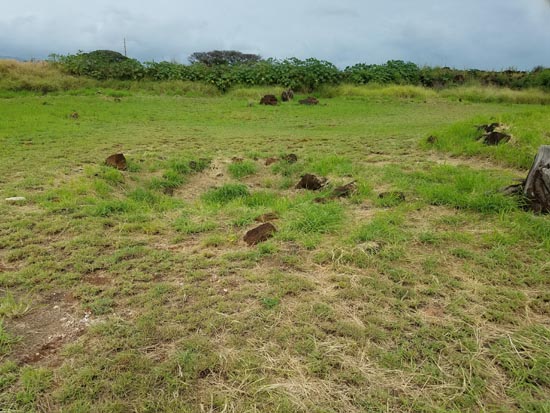
An underground pit (10 feet square)·was dug and lined with adobe for the storage of munitions. The armory was a larger structure that enclosed the storage pit.
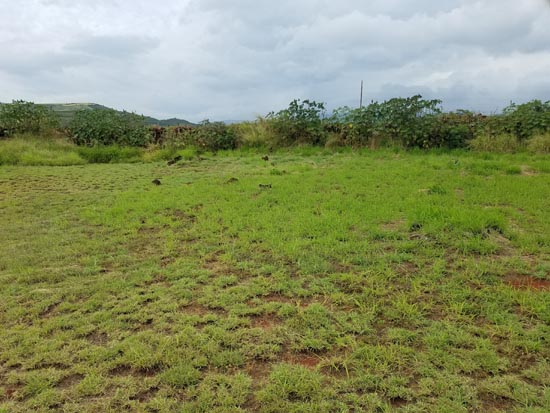
This alignment probably represents the foundation of the officer's quarters located along the northern wall of the fort. The foundation measures 15x7 feet.
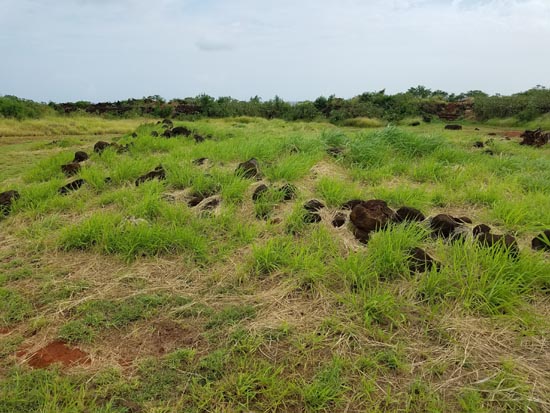
The barracks was the largest structure in the fort, measuring 80x30 feet. The structure was built on top of this stone-lined platform.
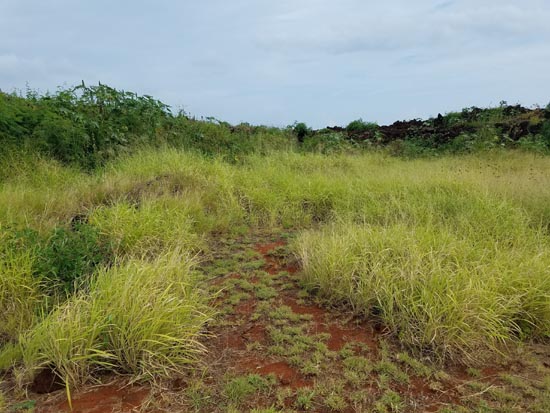
These enclosure structures built along the fort wall appear to post-date the dismantling of the fort (1864) and are probably a Hawaiian housesite.
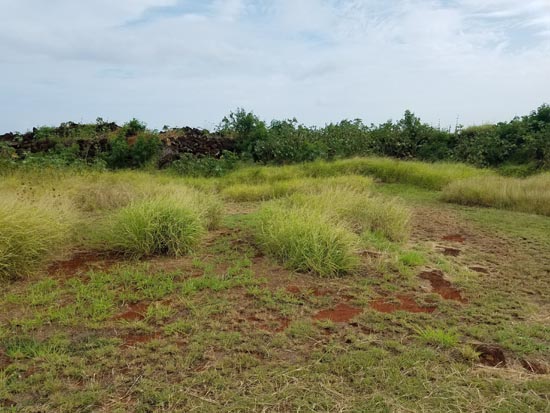
The foundations of these two buildings average 20x15 feet in size and both are located at the base of the stairs.
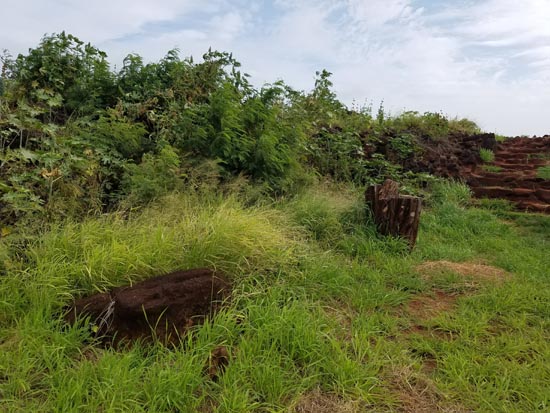
The foundations of these two buildings average 20x15 feet in size and both are located at the base of the stairs.
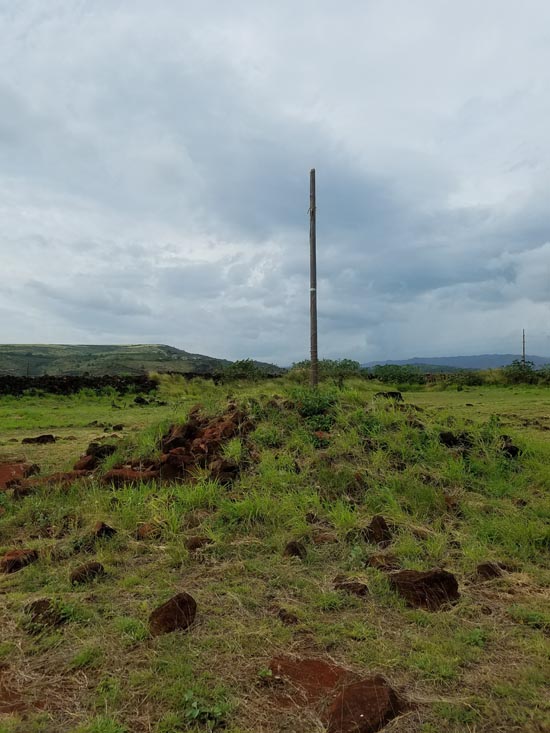
The flagstaff was the first structure completed within the fort. The flagpole was set into the depression in the center of the stacked rock platform.
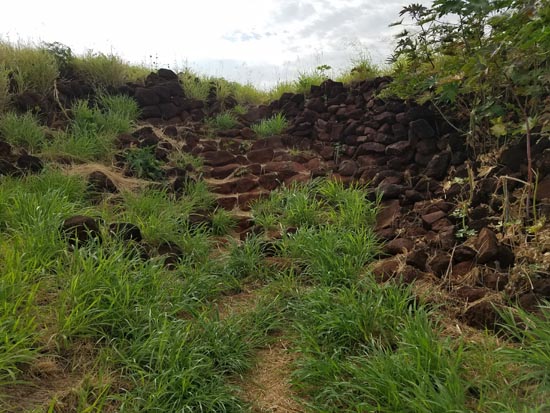
Stairs were built into each star-like projection for access to the cannons set atop the fort wall.
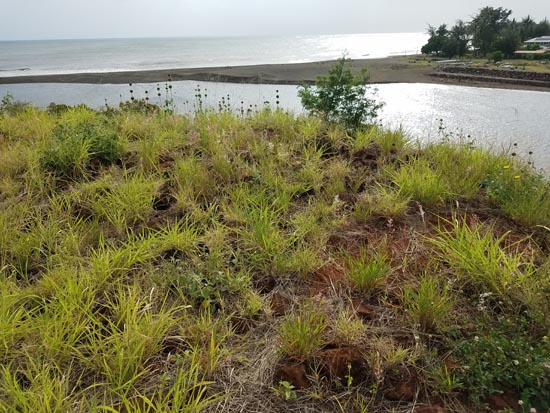
Cannons were placed at each projection on top of the fort wall. There were other cannons lined on the seaward exterior of the fort. These cannons were removed when the fort was dismantled.
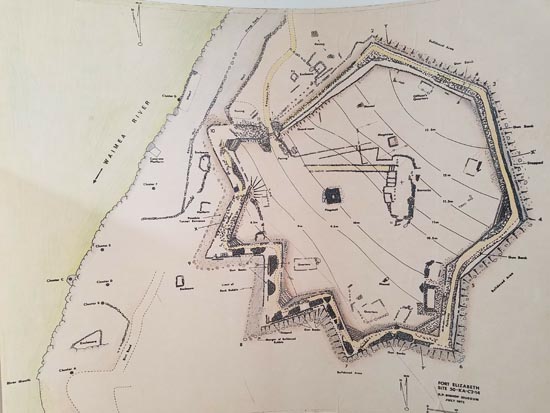
These star-like projections on the seaward side of the fort reflect the European design of forts in the 17th Century. This seaward portion was probably the first area of the fort wall constructed.
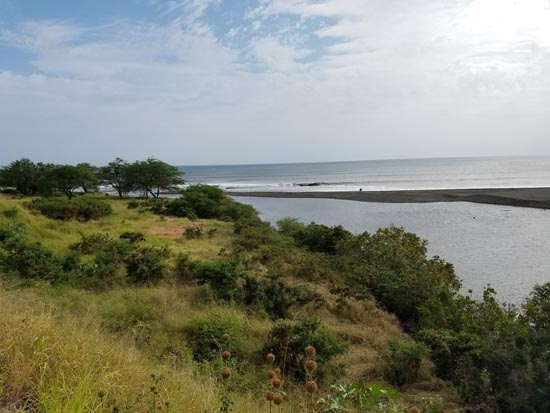
The first Western contact with Hawaii took place at the mouth of the Waimea River when Captain James Cook anchored there on January 20, 1778. The Hawaiians believed Cook to be their god Lono and prostrated themselves.
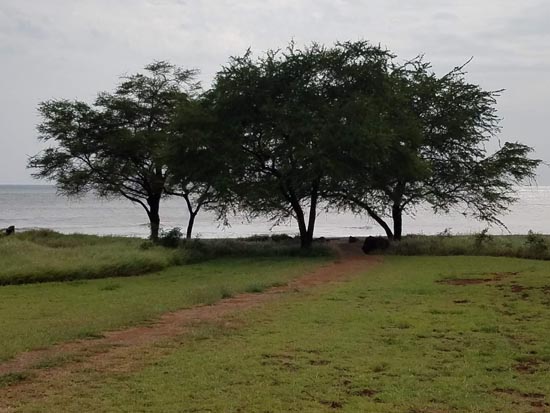
This is where the house was built in 1820 for the Reverend Whitney when the missionaries arrived in Waimea. Whitney's house also served as schoolroom and place for public wonhip.
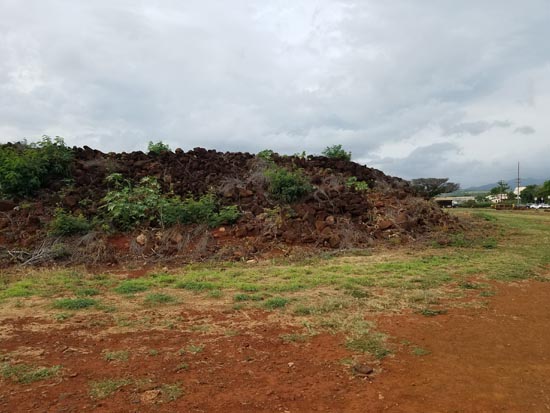
Jackson recorded a number of stacked rock walls and the housesiteof King Kaumualii in this area on the seaward portion of the fort. This area was cleared for sugarcane cultivation before 1900.
Closest City or Region: Russian Fort Elizabeth State Historical Park, Kauai, Hawaii
Coordinates: 21.952095, -159.663257
By Jeremy Dye
At the end of a long day, we stopped at Russian Fort Elizabeth State Historical Park on our way to our Airbnb. It was a fun little stop albeit a bit run down with a bunch of shady people hanging out in the parking lot. There wasn't a whole lot to see, but it looks like there are plans for adding a visitor center or something in the future.
 Russian Fort Elizabeth Interpretive Trail
Russian Fort Elizabeth Interpretive Trail
 Russian Fort Elizabeth State Historical Park
Russian Fort Elizabeth State Historical Park
 Makauwahi Cave Interpretive Trail
Makauwahi Cave Interpretive Trail
 Nounou Mt West Trail (Sleeping Giant)
Nounou Mt West Trail (Sleeping Giant)
 Puukohola Heiau National Historic Site
Puukohola Heiau National Historic Site
 Puukohola Heiau Visitor Center
Puukohola Heiau Visitor Center
 Lyman Museum and Mission House
Lyman Museum and Mission House
 Kaloko-Honokohau National Historical Park
Kaloko-Honokohau National Historical Park
 Hale Ho'okipa Visitor Contact Station
Hale Ho'okipa Visitor Contact Station
 Puuhonua O Honaunau National Historical Park
Puuhonua O Honaunau National Historical Park
 World War II Valor in the Pacific National Monument
World War II Valor in the Pacific National Monument